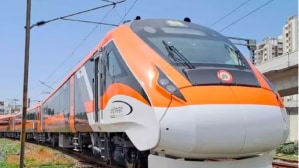All eyes will be on Finance Minister Nirmala Sitharaman on February 1, when she presents the Budget 2023. Individuals and businesses alike are hoping to welcome the new year with much more fanfare and are expecting some relief or benefits that can be availed in the forthcoming financial year.
India Auto Inc, which is already on a robust recovery spree, with passenger vehicles running towards record-breaking sales, any additional sop in the financial budget would act as an adrenaline boost to further propel the auto retail sales.
The Budget 2022-23 was hailed as a landmark budget for the transport and logistics sector. The government increased the target to expand the national highway network by 25,000km and allocated Rs 20,000 crore budget for the same. Then there was the allocation of 1.4 lakh crore for the development of the railway infrastructure. Or be it the 100 cargo terminals to be developed over three years.
Infrastructure development to help drive growth
Vinod Aggarwal, President, the Society of Indian Automobile Manufacturers (SIAM) and President & MD, Volvo Eicher Commercial Vehicles (VECV), in an interaction with Express Mobility hopes that the government would continue to focus on massive infrastructure growth.
“The government should continue to spend more on growth projects, infrastructure, and all other avenues like that. As an industry, we would be happy if the government continues with the growth-oriented approach and they should continue to be slightly more liberal in managing their deficits. The government should continue to spend more money on infrastructure and on other CAPEX projects. Like last year, the allocation was very good, with Rs 750,000 crore and we need that as we are developing the economy. We need the capital expenditure. For the rural consumers, the government could see how to address the pain points. If they’re impacted by the price-sensitive situation and are deferring purchases, there should be efforts how to bring them back,” he said.
Rationalisation in GST structure
It was on July 1, 2017, that the government of India finally introduced the much-awaited Goods & Services Tax (GST) to replace central and state taxes by bringing in much-needed clarity in the way taxes were collected. Under the new tax regime, goods and services are charged under four slabs – 5%, 12%, 18% and 28%.
For auto industry, there has been a demand for rationalisation of the same and ensuring that they are brought under the lower tax bracket.
“If one has to ask for a wish list, I think rationalisation of the GST tariff structure for the auto component industry. When the GST was announced in 2017, the component industry has 219 tariff lines of these, 40% were at 18% GST. Over the years, we have worked with the government, and today, 60% of these tariff lines are at 18% and 40% remains. I’m hopeful that as the revenue position of the government increases with more compliance across the sectors I think the government will take a be in a position because we are an intermediary industry. There are, there are very few concerns about any leakage or loss in our sector. I’m hoping that in the next few years, even these 28% rates will become 18%,” shares Vinnie Mehta, Director General, Automotive Components Manufacturers Association (ACMA).
FAME subsidies to be directly passed to customers
The electric vehicle industry is growing leaps and bounds in India. In 2022, an average of 83,585 electric vehicles were registered every month in the country. This is despite the challenges in the electric two-wheeler ecosystem.
As part of its wish list, Sohinder Singh Gill, Director General, SMEV (Society of Manufacturers of Electric Vehicles) and CEO, Hero Electric, said, “FAME policy subsidies should be directly passed on to the customers. Instead of a time-based policy, we can have a policy that supports EV adoption till it reaches around 20 percent level and then the subsidy can be tapered. I also think that the resources for the subsidy should be generated by taxing the polluters rather than dipping into the exchequer.”









